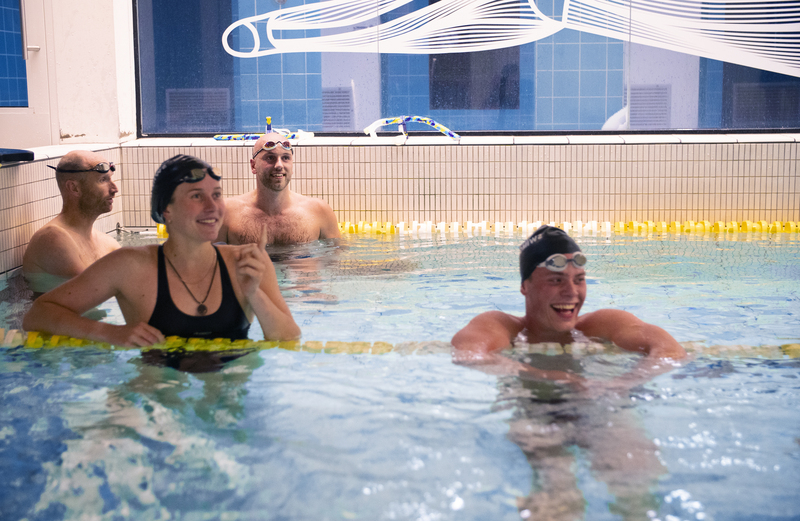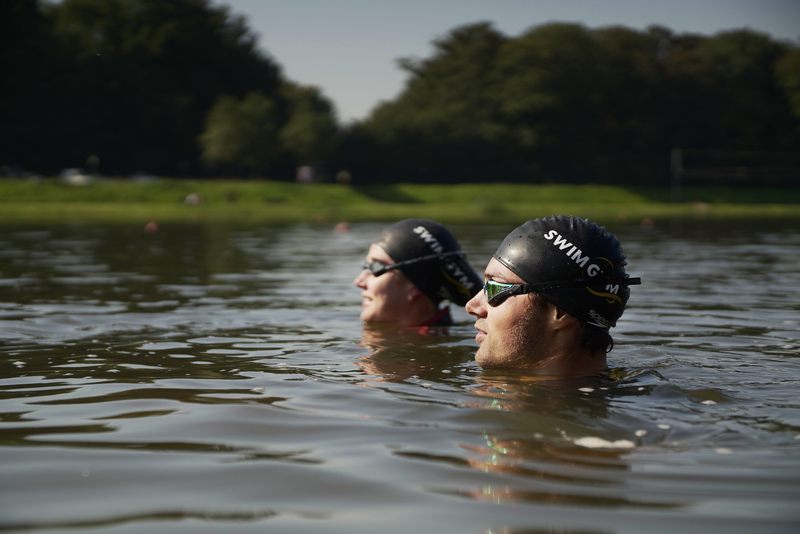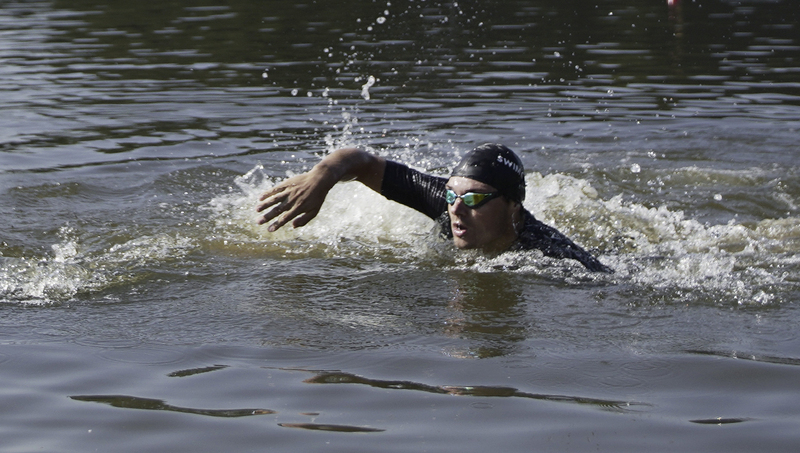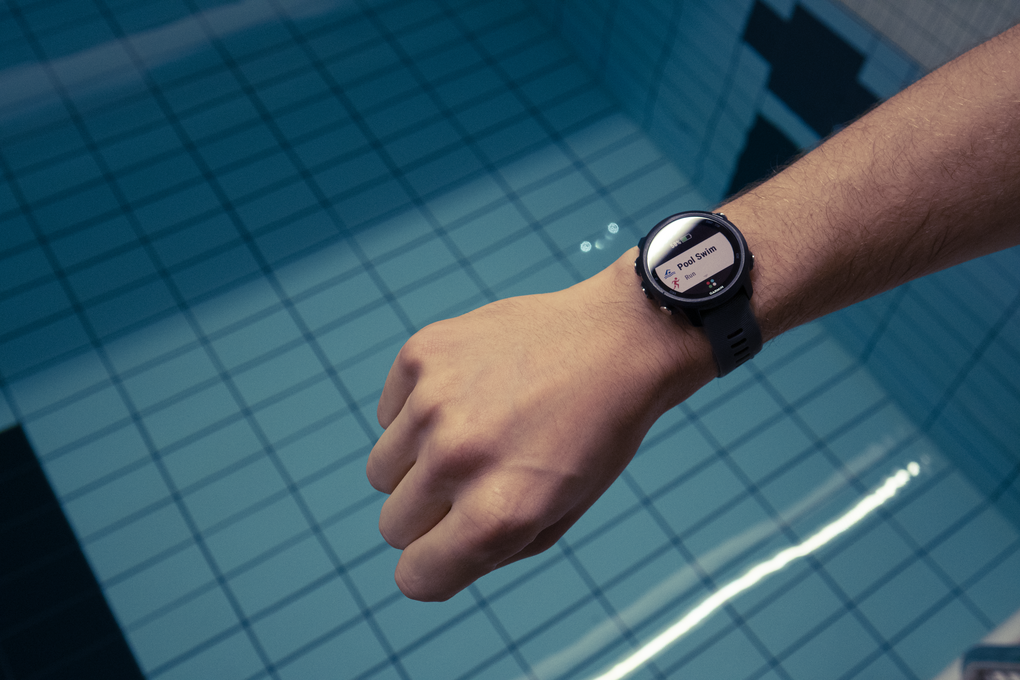Swimming blog - TRAINING and HEALTH Sport watches & swimming: the pros and cons
The GPS sports watch has become one of, if not, the most important ways to record sporting effort in the modern world. It is without a doubt a place of big data. There are pros and cons to the information your watches collect. It may also be confusing to know how to apply or interpret the information your watch collects. For instance, can you use your watch to change your swimming technique? This is a regular question we get. In this blog we dive into the pool of big data and try and give you some clear answers.
You won’t see competition pool swimmers using watches at all, yet most Triathletes wear one. Why is that? Many competitive pool swimmers have a coach and pool clock. Triathletes on the other hand swim mostly alone with no coach and no clock, certainly in the open water.
Also, there may be a cultural reason for this difference. Triathletes tend to share their training information on social athlete networks like STRAVA while pool swimmers rarely share details of swim sets but rather memes and photos and videos of what they get up to.

Pros of a sports watch
Portable
The portable nature of the watch means you can take it anywhere and is useful in gathering information where ever you decide to swim. You don’t have to have a coach or clock beside you. You can now swim out in the sea, lake or river and be able to check the information on your watch as you go. This is a wonderful pro. Brilliant! This is a great tool to have as an athlete.
SWOLF
The watch makes complicated simple. It is really difficult to count strokes and time yourself in a swimming pool, nearly impossible in open water. But with a sports watch it's easy peasy. We love the SWOLF feature. All modern sport watches give it to you. SWOLF is a made-up word between SWim and gOLF. While you are swimming your watch adds how many strokes you make with the watch arm to your 25m swim time. So, for example if you swim a 25 in 25 seconds with 25 strokes, your SWOLF is 50. Just like in golf you want to bring the score down over time. This score is unique to you, so try not to compare.
This metric can give you a real insight into how efficient your swimming is. And tell you when it’s less efficient. The insight is this. Your stroke is inefficient in two scenarios: If your stroke count is high and time is high or if your stroke count is low and time is high. By high we mean slower. Play around with both stroke count and time to see where your optimum is. Remember you want the SWOLF to come down over time.
HR and Recovery
This is an incredible pro. A 24/7 heartrate monitor. You can check while you’re swimming, or afterwards, in what training zone you were by how high or low your HR was. There are no complicated tests needed or straps, it's just right there on your watch. In addition to this your watch is smart. It measures your resting HR and will even tell you if you have recovered from the previous days training. This is a real pro to prevent over or under training.
Tracking
Your sports watch also tracks a lot of information while you swim. Besides your SWOLF, heart rate and recovery, it also is a timer and tracks your pace while swimming. You will exactly know your times over all distances you swim. It will also keep count of the distance you swim, which makes keeping count a bit easier. A great pro as well, is that your watch GPS knows where you are swimming when you are in the open water (see picture below). This way you know if you were able to swim straight, or not.
Example of an open water swim tracked by a sports watch:

A training and life dairy
Athletes are encouraged to keep a journal. The watch can do most of that for you. The only thing it cannot measure is your Rate of Perceived Exertion (your effort on a scale from 1 to 10), but well, you can just fill that in next to your data. Some swims might feel amazing, and you are flying through the water, so RPE might be 5, even for a hard session. Other swims, that are supposed to feel easy, might feel really hard, so you're RPE can be higher. This is how you personally feel, without any data from your watch. But your watch can remind you of epic swims in open water or those very hard sessions in the pool. A great reminder and motivator to keep going and making memories.

The cons of a sports watch
The watch cannot gather information about your technique. It cannot tell you anything about body rotation, breathing, hand entry or catch. These are crucial to an efficient stroke. You will still need a coach for that. Go to SwimGym.com to have your technique analysed. Watches are worn on one arm and so, at the moment, any information can only be gathered from the arm wearing the watch.
Wearing a watch can lead to technique asymmetry. One hand does something slightly different than the other. It may impact your feel for the water, hand entry and catch. We see a lot of swimmers touching their watches at turns leading to a more pronounced entry over the middle line. A watch may have a negative impact on your swimming technique. A watch may lead to injuries if you are just swimming for the numbers and not listening to the numbers, like SWOLF and heartrate. Lose the watch if you are doing an easy technique training. Its not needed.

Interpreting the data
The data collected by your watch needs to be placed in the context of you. Your age, body type, swimming experience, how often you swim etc. The data is somewhat meaningless without this context.
For instance, the average pace per 100m is meaningless without knowing what your aerobic threshold is or what pace belongs to what training zone.
Hence you should employ a coach to analyse the data with you if you are serious about getting the most out of your watch. SwimGym.com employs very experienced coaches. Reach out to us.
The data comes alive and useable when you place it in the context of what is optimal for you. Data from your swims can look like this:

The modern sports watch is an invaluable tool to record your journey. It gives us information that, a generation ago, would have been impossible to get without big machines. We should be grateful that we can work on our physical health in such a positive way. Don’t get lost in the numbers but let them guide you to a happier and healthier lifestyle.
Written by Michael Stolt
